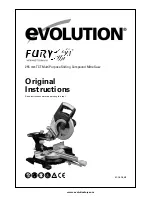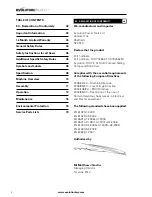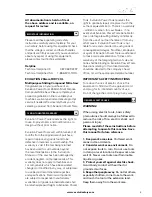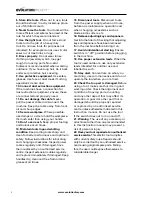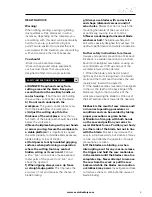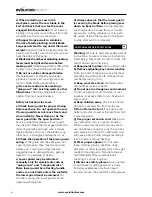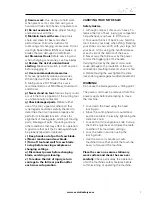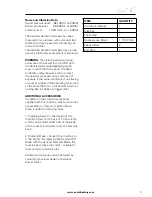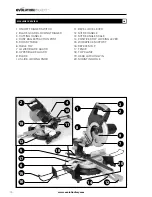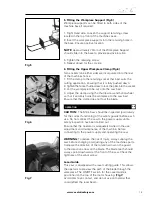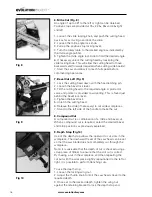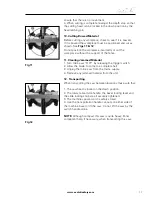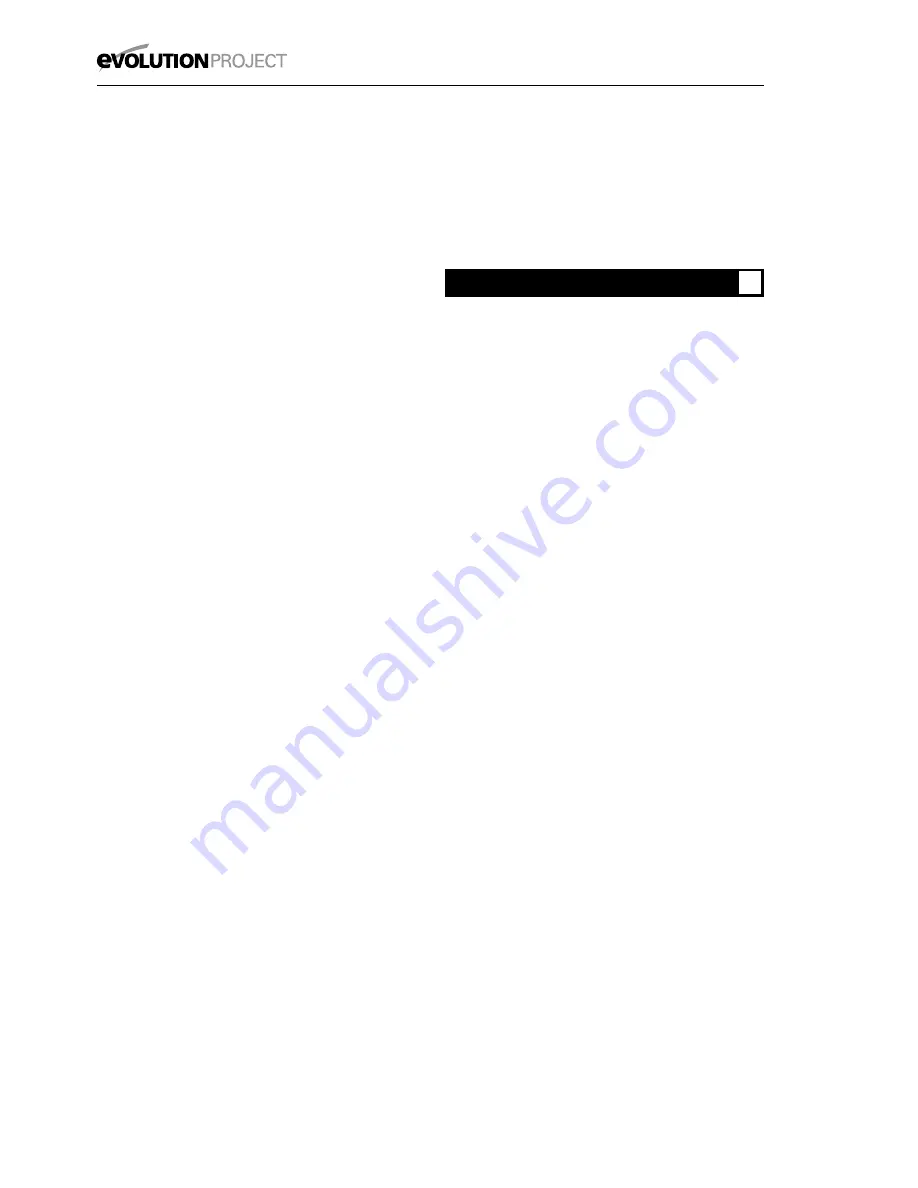
6
www.evolutionfury.com
c) When restarting a saw in the
workpiece, centre the saw blade in the
kerf and check that saw teeth are not
engaged into the material.
If saw blade is
binding, it may walk up or kickback from the
workpiece as the saw is restarted.
d) Support large panels to minimise
the risk of blade pinching and kickback.
Large panels tend to sag under their own
weight.
Supports must be placed under the
panel on both sides, near the line of cut and
near the edge of the panel.
e) Blade depth and bevel adjusting locking
levers must be tight and secure before
making a cut.
If blade adjustment shifts while
cutting. it may cause binding and kickback.
f) Do not use dull or damaged blades.
Unsharpened or improperly set blades
produce a narrow kerf causing excessive
friction, blade binding and kickback.
g) Use extra caution when making a
“plunge cut” into existing walls or other
blind areas.
The protruding blade may cut
objects that can cause kickback.
Safety instructions for saws
a) Check lower guard for proper closing
before each use. Do not operate the saw
if lower guard does not move freely and
close instantly. Never clamp or tie the
lower guard into the open position.
If
saw is accidentally dropped, lower guard
may be bent. Raise the lower guard with the
retracting handle and make sure it moves
freely and does not touch the blade or any
other part, in all angles and depths of cut.
b) Check the operation of the lower guard
spring.
If the guard and the spring are not
operating properly, they must be serviced
before use. Lower guard may operate
sluggishly due to damaged parts, gummy
deposits, or a build-up of debris.
c) Lower guard may be retracted
manually only for special cuts such as
“plunge cuts” and “compound cuts.”
Raise lower guard by retracting handle
and as soon as blade enters the material,
the lower guard must be released.
For
all other sawing, the lower guard should
operate automatically.
d) Always observe that the lower guard
is covering the blade before placing saw
down on bench or floor.
An unprotected,
coasting blade will cause the saw to walk
backwards, cutting whatever is in its path.
Be aware of the time it takes for the blade
to stop after switch is released.
ADDITIONAL SAFETY INSTRUCTIONS
Warning:
Be sure to read and understand all
instructions. Failure to follow all instructions
listed below may result in electric shock, fire
and/or serious personal injury.
a) Keep guards in place
and in working order.
b) Remove adjusting keys and wrenches.
Form the habit of checking to see that keys
and adjusting wrenches are removed from
tool before turning it on.
c) Keep work area clean.
Cluttered areas
and benches invite accidents.
d) Do not use in a dangerous environment.
Do not use power tools in damp or wet
locations, or expose them to rain. Keep work
area well lit.
e) Keep children away.
All visitors should
be kept a safe distance from work area.
f) Do not force the tool.
It will do the job
better and safer if used at the rate for which
it was designed.
g) Use proper extension cord.
Make sure
your extension cord is in good condition.
When using an extension cord, be sure to
use one heavy enough to carry the current
your product will draw. An undersized cord
will cause a drop in line voltage resulting in
loss of power and overheating.
h) Wear proper apparel.
Do not wear
loose clothing, gloves, neckties, rings,
bracelets, or other jewellery which may get
caught in moving parts. Nonslip footwear
recommended. Wear protective hair
covering to contain long hair.
i) Always use safety glasses.
Also use face
or dust mask if cutting operation is dusty.
Everyday eyeglasses only have impact
resistant lenses, they are NOT safety glasses.
®
ADDITIONAL SPECIFIC SAFETY RULES
GB

